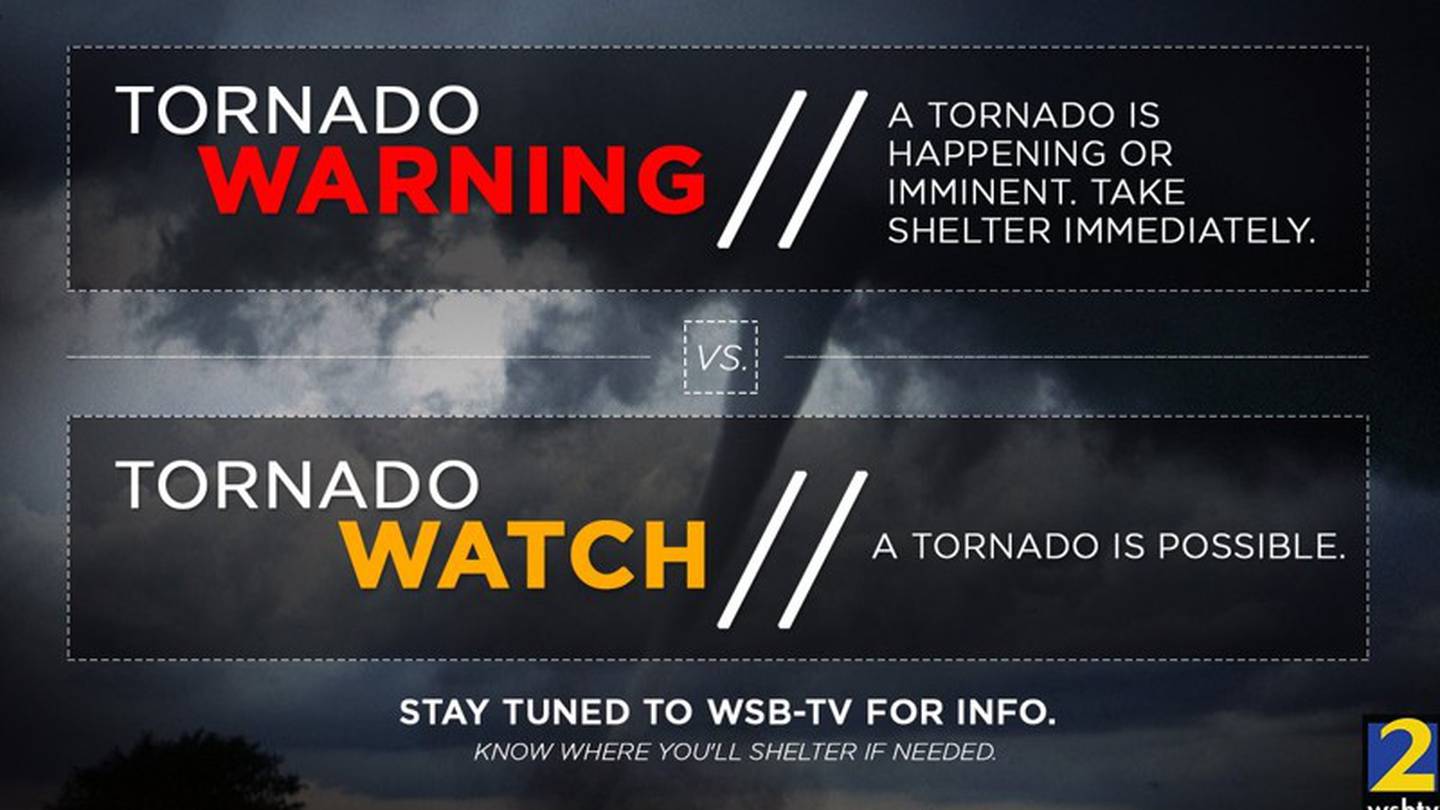What is worse, a tornado watch or a tornado warning? This is a common question that many people have when it comes to severe weather. Let’s dive into the details to understand the differences between a tornado watch and a tornado warning and determine which one is worse.
A tornado watch is issued by the National Weather Service when the conditions in a particular area are favorable for the development of tornadoes. The watch usually covers a large area and typically lasts for several hours. During a tornado watch, you should be prepared to take action in case a tornado warning is issued. While a tornado watch doesn’t necessarily mean that a tornado will occur, it signifies that the conditions are ripe for tornado formation.
On the other hand, a tornado warning is issued when a tornado has been sighted by spotters or detected by radar in a specific area. When a tornado warning is issued, it means that there is imminent danger and you should take immediate action to protect yourself and your loved ones. A tornado warning is a more serious situation than a tornado watch since it indicates that a tornado is either occurring or is about to occur.
The Differences between a Tornado Watch and a Tornado Warning
Now that we understand the basic definitions of a tornado watch and a tornado warning, let’s dive deeper into the differences between the two.
Coverage Area
A tornado watch covers a wide area, often spanning multiple counties or even states. It is issued when atmospheric conditions are conducive to tornado formation. In contrast, a tornado warning is issued for a specific area where a tornado has been sighted or indicated by radar. The coverage area of a tornado warning is much smaller and more localized than that of a tornado watch.
Duration
A tornado watch can last for several hours, typically from two to six hours, depending on the severity of the weather conditions. This allows people in the affected area to be prepared and stay vigilant. On the other hand, a tornado warning is issued when a tornado is imminent or occurring and generally lasts for a shorter period, often around 30 minutes to an hour.
Level of Urgency
While both a tornado watch and a tornado warning should be taken seriously, a tornado warning carries a higher level of urgency. It means that a tornado has been observed or detected and is likely to impact the warned area. During a tornado warning, it’s crucial to seek shelter immediately and take necessary precautions to protect yourself from the imminent danger. A tornado watch alerts you to the possibility of tornado development but doesn’t require immediate action.
Actions to Take
During a tornado watch, you should stay informed about the weather conditions through local news or weather alerts and be prepared to take action if a tornado warning is issued. Use this time to review your emergency plan, gather essential supplies, and ensure that you have a safe place to take shelter. When a tornado warning is issued, you should seek shelter in a sturdy building’s lowest level, away from windows and exterior walls, and protect yourself by getting under a sturdy piece of furniture or covering yourself with a mattress or heavy blankets.
Which is Worse: Tornado Watch or Tornado Warning?
Now that we have examined the differences between a tornado watch and a tornado warning, let’s address the question: which one is worse?
In terms of potential danger, a tornado warning is indeed worse than a tornado watch. A tornado warning indicates that a tornado is either occurring or is imminent, posing an immediate threat to life and property. In contrast, a tornado watch is a prelude to severe weather development and doesn’t necessarily mean that a tornado will occur. However, both a tornado watch and a tornado warning should be taken seriously and prompt you to be prepared and take necessary precautions.
Frequently Asked Questions
Q: Can a tornado develop without a tornado watch?
Yes, tornadoes can develop without a tornado watch being issued. While a tornado watch serves as an alert that conditions are favorable for tornado formation, tornadoes can form rapidly and unexpectedly. It’s always important to stay informed about weather conditions and be prepared for severe weather, regardless of the presence of a tornado watch.
Q: What should I do if I am in my car during a tornado warning?
If you are in your car during a tornado warning, you should seek shelter immediately. Do not try to outrun a tornado in your car, as it is extremely dangerous and unpredictable. Find a sturdy building or a designated storm shelter and take cover. If you cannot find shelter, lie flat in a low-lying area, such as a ditch or culvert, and cover your head with your hands.
Q: How can I stay informed about severe weather alerts?
There are several ways to stay informed about severe weather alerts. You can sign up for local weather alerts on your smartphone or through a weather app. Additionally, you can invest in a weather radio that receives National Weather Service alerts. Follow local news channels, listen to the radio, or check online weather sources for the most up-to-date information.
Final Thoughts
In summary, a tornado watch and a tornado warning are two distinct weather alerts that serve different purposes. A tornado watch indicates that conditions are favorable for tornado development and encourages people to be prepared. A tornado warning, on the other hand, is a more severe alert that indicates the immediate threat of a tornado. While a tornado warning is more dangerous than a tornado watch, both should be taken seriously and prompt you to act accordingly to ensure your safety. Stay informed, have a plan, and take shelter when necessary to protect yourself and your loved ones during severe weather events.
